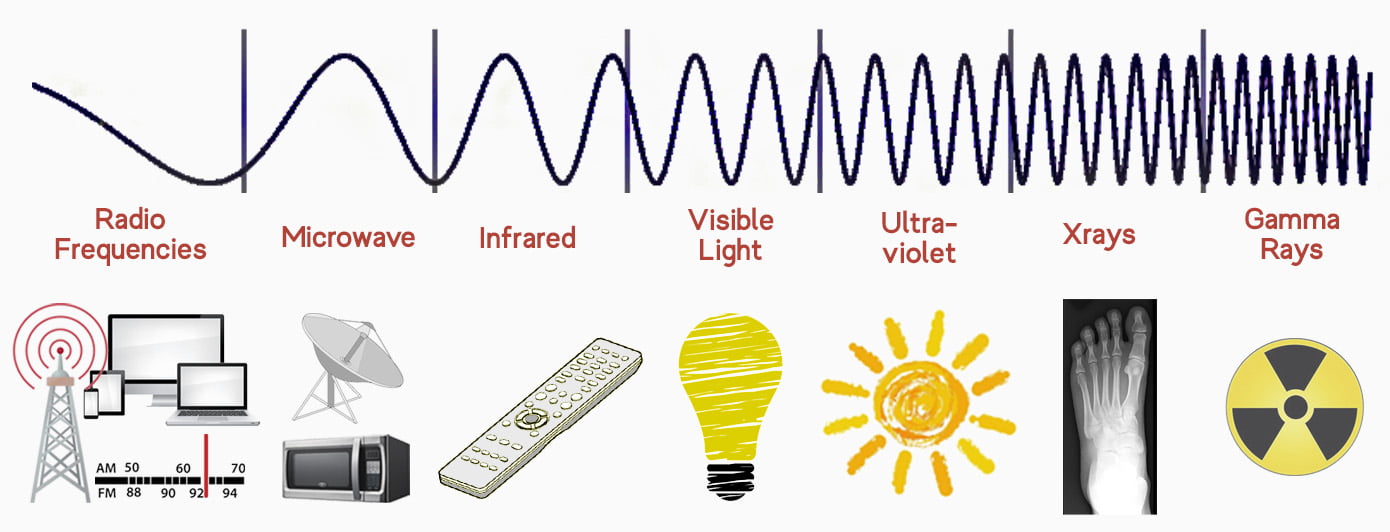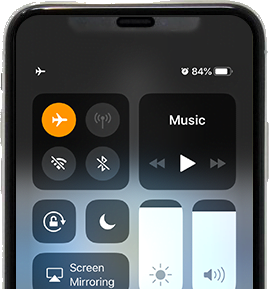I’m writing this article right now on a laptop… but I wish we’d stop calling them ‘laptops’. That’s because you should never sit with one directly on your lap. Not only does the EMF from laptops radiate into your body, but studies show the heat radiation alone can significantly lower sperm count, cause a serious skin rash (on and around your genitals!), and slowly burn your skin without you even realizing it.
Laptops on our laps aren’t our only concern. We also shouldn’t put our cell phone directly against our ear without an EMF shield to protect our brain. And we definitely shouldn’t let the kids hang out on the tablet for hours at a time.
So, why should we be concerned with EMF? Where does it come from? And how do we protect ourselves? Great questions! 😉 Let’s find out.
Also read: Interview with Daniel DeBaun, Founder of DefenderShield EMF Protection
This article covers
What is EMF?
When we talk about EMF (electromagnetic fields) with regards to our health, we’re really referring to electromagnetic radiation. There are both natural and artificial sources of EMF, each emitting invisible waves of energy that can interact with our bodies in different ways, depending on the frequency and intensity of the fields.

EMF is everywhere in our environment and it isn’t inherently bad. Adventurers have long relied on the earth’s magnetic north pole to align their compasses and navigate new worlds. Migratory birds, sea turtles, butterflies, and other animals are also known to rely on the earth’s magnetic lines to guide their way. Natural EMF is also emitted from the sun’s ultraviolet rays and our visible spectrum of light. We also experience it during natural events such as thunder and lightning storms.
And then there’s the artificial= human-made stuff.
The earlier artificial EMF came with the advent of radios, TV, refrigerators, and other electronics. This wasn’t too terrible since our exposure was fairly limited. Yes, these electric sources were more concentrated than the natural sources, but at least we weren’t in physical contact with them all day.
Today is obviously a different story. We are physically engaged with our personal devices all day long. They are on our laps, in our pockets, wrapped around our wrists, and even next to our heads as we sleep. And beyond the EMF flowing from these devices, we continually bathe in the wifi and bluetooth signals they rely on.
Sigh. If only our hybrid electric cars could whisk us away from our smart home to some off-the-grid paradise. Hey Siri, find me a remote cabin in the woods!

Health effects from EMF
The potential health effects from artificial EMF are still being researched and have been cause for considerable debate among doctors and scientists. Many believe that even low-frequency EMFs are [tooltip tip=”cancer-causing”]carcinogenic[/tooltip] and related to higher incidences of degenerative disease. Others wave it off as bunk, because the data is inconclusive.
But those relying solely on hard data seem to be missing a different kind of evidence. There are countless reports from individuals suffering from a condition called electromagnetic hypersensitivity (EHS) and it’s becoming more prevalent as smart meters and 5G invade our personal environments. Even minimal exposure to certain EMFs can leave these folks with lasting rashes, headaches, brain fog, fatigue, and other uncomfortable and sometimes debilitating symptoms.
While the EMF naysayers also call baloney on electromagnetic sensitivities (again citing inconclusive hard evidence), sufferers who take measures to significantly reduce their EMF exposure report a significant reduction in their symptoms. Hmmmmmm.
Reducing EMF Exposure
Whether you’re sensitive or not, today’s high and concentrated levels of electromagnetic field disturbances on our body are a growing concern. Nearly every aspect of our life is now wifi and bluetooth enabled and technology will only become more pervasive over time. While EMF avoidance is barely possible, there are several easy practices we can follow to decrease our exposure.
1. Limit your EMF-emitting sources
The more electronic devices you have in your home, the more you’re exposed. Letting go of our devices isn’t always feasible, but that doesn’t mean you can’t have a safe haven. Consider creating at least one device-free room in your house, ideally the bedroom(s).
2. Reduce time on your devices
The less time you spend on your devices the better, so give yourself a few tech breaks each day. It’s not as impossible as it sounds! In the days of yore, we used to engage in emoji-free conversations at mealtime. Revisit this ancient practice by putting your phone in another room, instead of on the table.
By the way, even when your cell phone is put away, it’s still connected to – and communicating with – cell towers and wifi devices. Consider turning it off or putting it in airplane mode while you sleep, while you’re driving, and even when you’re working. You can turn it back on to check for missed calls and voicemails periodically… while savoring your increased productivity.
P.S. It’s also a good idea to turn off your wifi router, laptop, tablet, and other devices when they’re not in use.

3. Avoid body contact and keep your distance
Always keep at least some distance between you and your laptop, phone, or other EMF source. Even a small increase in distance can make a notable difference. For example, if you keep your cell phone two feet away as you sleep, you’ll experience ¼ the radiation exposure than you would with it only one foot away. And if you keep it 4 feet away, you’ll experience 1/16 the exposure. Put it in another room entirely and enjoy a more restful sleep.
Never keep your phone in your pocket or in your bra. There have been too many documented cases of women developing tumors in the exact spot where they held their phone.
Also, use a radiation-free headset instead of putting your phone directly against your ear. Similarly, don’t work or play games with your laptop or tablet directly on your lap. Either put the device on a table to create distance or use an EMF shield (discussed below) to block the radiation.
Radio frequencies and ELF (extremely low frequencies) are also emitted from the top of your laptop (where the keyboard sits) and blue light is emitted from the screen. Consider using a wired keyboard to avoid touching it directly and an external monitor to give yourself some distance and protect from digital eye-strain.
DefenderShield EMF Protection
4. Go wired, when you can
Just because something CAN be wireless, doesn’t mean it HAS to be. For example, use a wired headset instead of bluetooth. And plug your Roku or Apple TV directly into the router, instead of having these devices communicate through the air.
You can also plug your laptop into the router instead of relying on wifi. However, if you’ll be sitting that close to it, you should also place the router in a Faraday cage, which will block most of the radiation.
5. Use EMF-reducing devices
EMF blockers, diverters, and absorbers can help to significantly reduce the amount of radiation we receive from our devices. Don’t worry, these devices are not electronic! They are typically made from a thin mesh of silver, copper, or aluminum wires, that are then woven into a polyester or cotton fabric.
Plenty of EHS sufferers claim these fabrics and devices have significantly reduced, and in some cases completely eliminated, their electromagnetic sensitivities. And independent testing in certified FCC labs has verified the results. (Take that, naysayers!) On that note, not all manufacturers have their products independently tested for efficacy, so be sure to look for those who have.
Popular EMF protection devices include:
- Laptop mats and mobile phone covers that are designed to block, divert, or absorb a device’s EMF
- Blue light eyeglasses and filters that block as much as 99% of the retina-damaging, sleep-disrupting blue light emitted by TV, computer, and mobile device screens
- Smart meter guards to block this RF radiation
- Signal attenuators (‘tamers’) that reduce the unnecessarily high output of wifi routers without affecting their speed
- RF meters to test for this type of EMF in your home, as well as mesh RF shields and window films to block it
Check out this video by Defender ShieldDefenderShield (a leader in EMF protection) to learn more about protecting yourself from device radiation.
A final note
The interesting thing about EMF is that ‘non-sensitive’ folks don’t think EMF raditaion affects them. That is, until they begin to take measures (on behalf of a loved one, for example) to identify and reduce it in their home. Just something to consider, if you can’t figure out where your headaches or skin rashes are coming from.
Oh, and if you come up with any snappy, clever names to replace ‘laptop’, I’m all ears. Either way, keep that computer away from your crotch and that phone away from your ear. Your body will thank you.
DefenderShield EMF Protection
[accordions] [accordion title=”Research” load=”hide”]
- https://www.defendershield.com/learn/protect-electromagnetic-radiation/
- http://www.who.int/peh-emf/publications/facts/fs296/en/
- https://www.who.int/peh-emf/about/WhatisEMF/en/
- https://www.cdc.gov/nceh/radiation/nonionizing_radiation.html
- https://www.ncbi.nlm.nih.gov/pubmed/19398310
- https://www.niehs.nih.gov/health/topics/agents/emf/
- https://academic.oup.com/humrep/article/20/2/452/603276
- https://escholarship.org/uc/item/4n04r793
- https://www.ncbi.nlm.nih.gov/pubmed/10533916
- http://bemri.org/publications/natural-fields/427-natural-and-human-activity-generated-electromagnetic-fields-on-earth/file.html
- http://www.who.int/peh-emf/about/WhatisEMF/en
- https://www.ncbi.nlm.nih.gov/pubmed/22315933
- https://www.aao.org/eye-health/tips-prevention/should-you-be-worried-about-blue-light
- https://www.degruyter.com/downloadpdf/j/phys.2012.10.issue-5/s11534-012-0094-z/s11534-012-0094-z.pdf
- https://www.livescience.com/32732-how-does-a-compass-work.html
- https://www.decodedscience.org/animal-magnetism-magnetic-field-influences-animal-navigation/50745
- https://www.economist.com/the-economist-explains/2018/09/25/how-some-animals-use-the-earths-magnetic-field-to-navigate
[/accordion][/accordions]





